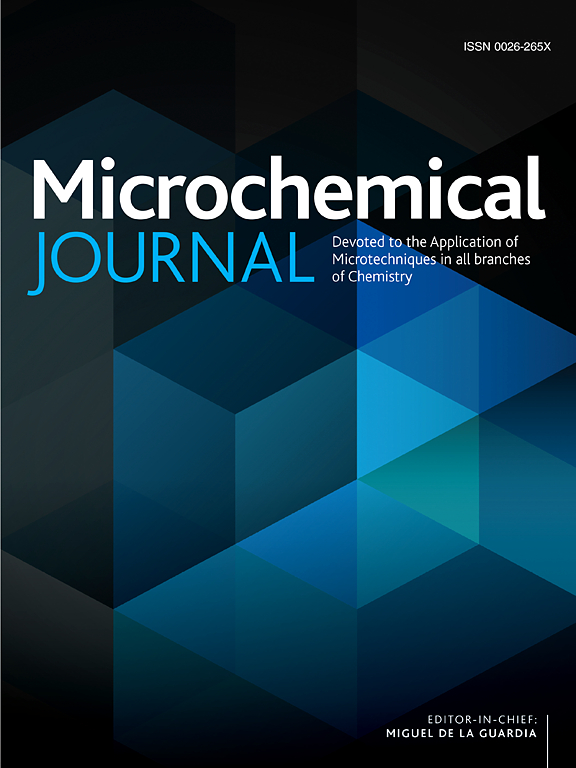Residue analysis and degradation studies of two chiral pyrethroids in cabbage by ultra performance convergence chromatography
IF 4.9
2区 化学
Q1 CHEMISTRY, ANALYTICAL
引用次数: 0
Abstract
A novel and accurate method was developed for the determination of the chiral isomers residue of bifenthrin and fluvalinate in cabbage by solid-phase extraction (SPE) in combination with ultra performance convergence chromatography (UPC2).
Four kinds of bifenthrin and fluvalinate isomers were well separated on a CHIRALPAK OJ-H chiral column within 5 min. The method obtained excellent calibration linearity (r2 > 0.9992) and a satisfactory analysis of the targeted compound, which were evaluated with calibration standards over the range of 0.5–20 mg/mL. The recovery rates ranged from 80.4 % to 102 %, with relative standard deviations below 6.8 %. The limits of quantitation were 0.1–0.2 mg/kg in cabbage leaves. The residual amounts of bifenthrin and cyfluthrin isomers on cabbage were less than 0.5 mg/kg after 3 days of application. The residual half-life of the four pyrethroid isomers was about 2.5 days. There was no obvious enantioselectivity upon degradation between the isomers of bifenthrin and fluvalinate during the growth of cabbage leaves. None of the isomer residues of bifenthrin and fluvalinate were detected in 20 pieces of commercial cabbage samples. The method has the advantages of easy operation, satisfied separation effect and environmental friendly, and can meet the demand of the four kinds of isomers residue analysis of bifenthrin and fluvalinate. The results provided technical support for further research on the residue and degradation of chiral pesticides during vegetable growth.

求助全文
约1分钟内获得全文
求助全文
来源期刊

Microchemical Journal
化学-分析化学
CiteScore
8.70
自引率
8.30%
发文量
1131
审稿时长
1.9 months
期刊介绍:
The Microchemical Journal is a peer reviewed journal devoted to all aspects and phases of analytical chemistry and chemical analysis. The Microchemical Journal publishes articles which are at the forefront of modern analytical chemistry and cover innovations in the techniques to the finest possible limits. This includes fundamental aspects, instrumentation, new developments, innovative and novel methods and applications including environmental and clinical field.
Traditional classical analytical methods such as spectrophotometry and titrimetry as well as established instrumentation methods such as flame and graphite furnace atomic absorption spectrometry, gas chromatography, and modified glassy or carbon electrode electrochemical methods will be considered, provided they show significant improvements and novelty compared to the established methods.
 求助内容:
求助内容: 应助结果提醒方式:
应助结果提醒方式:


